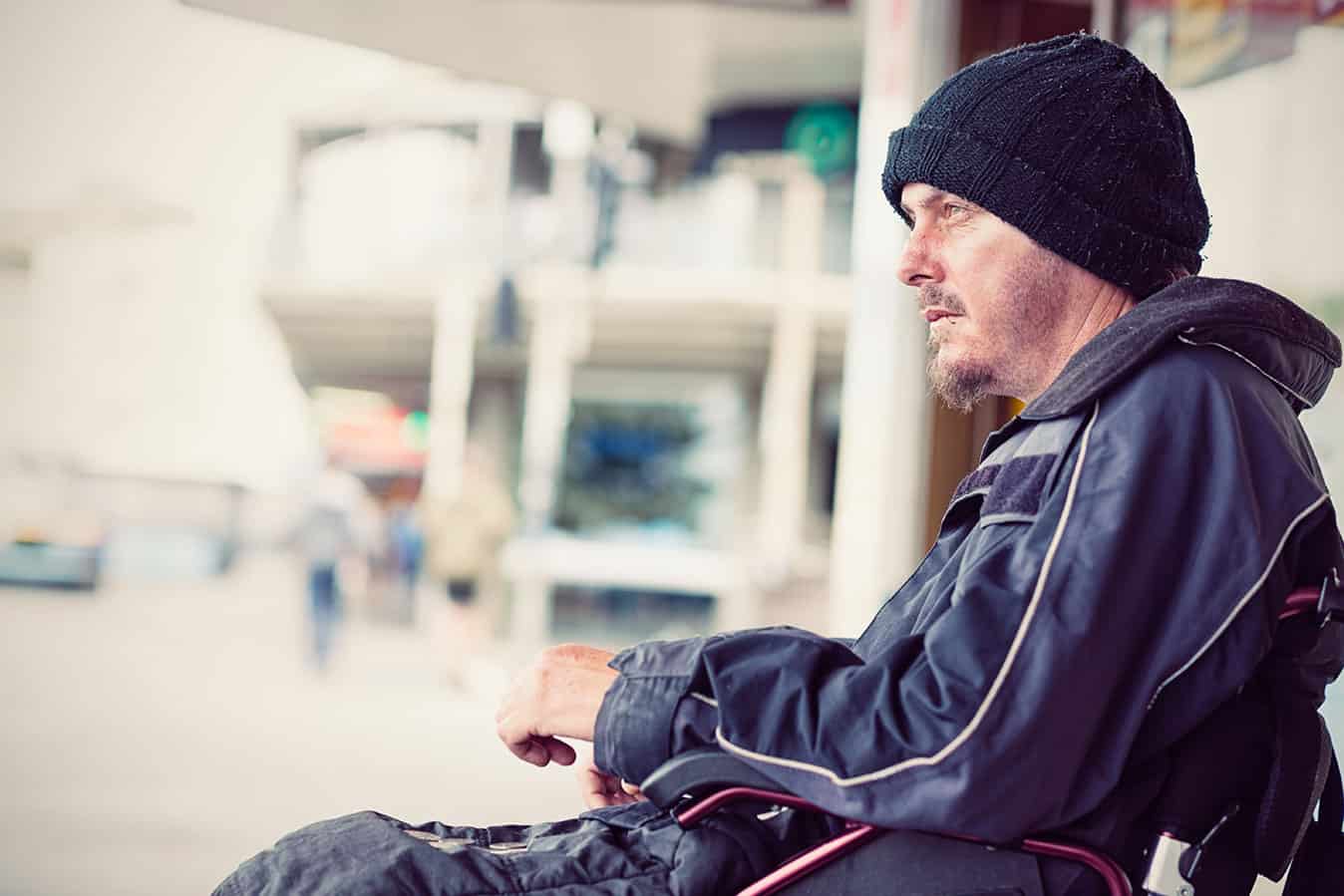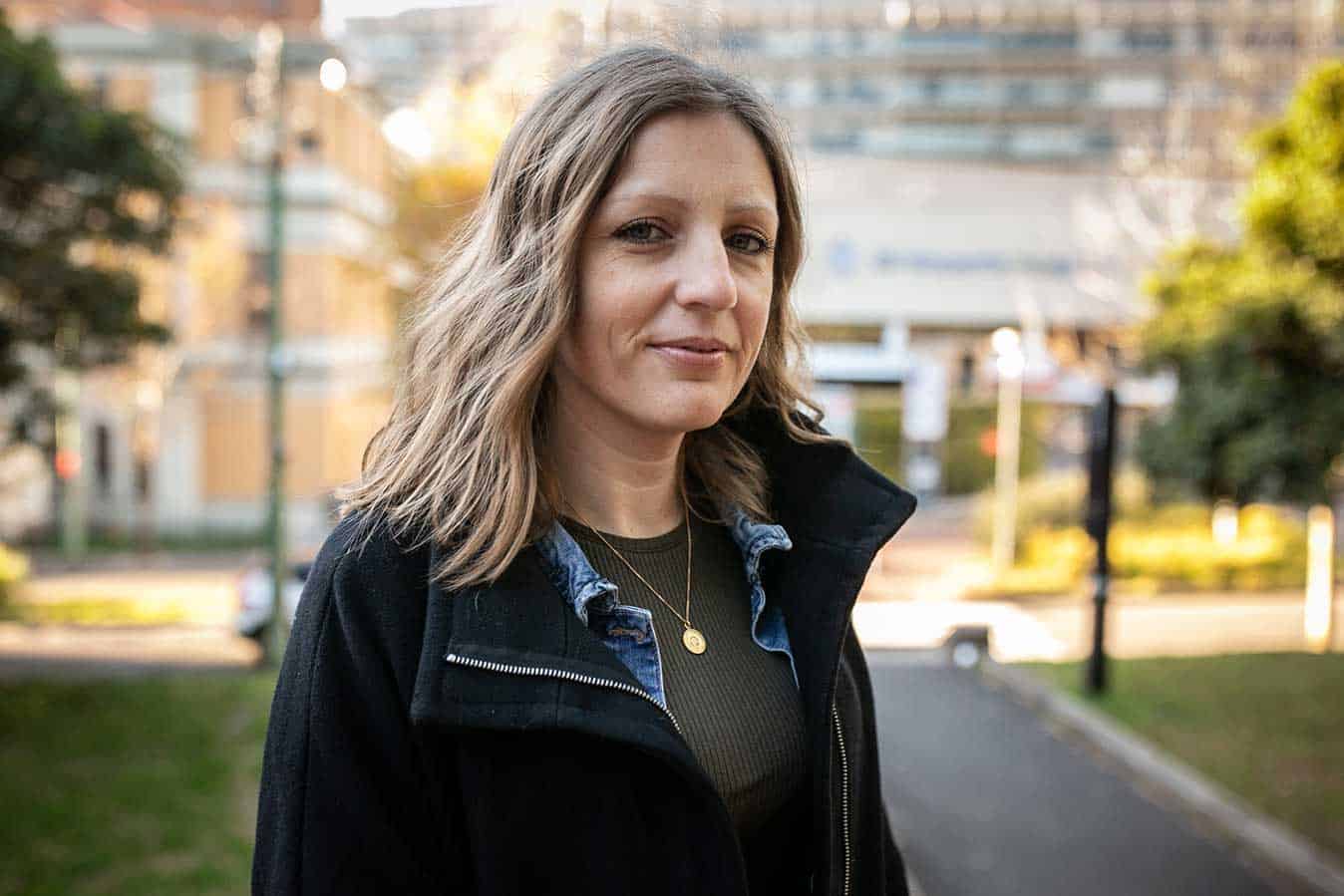“The people that we care for, it’s an absolute privilege to be allowed into their lives and be given a little glimpse of the amazing, colourful, incredible people that they are,” says Erin Longbottom, Nurse Unit Manager of the Homeless Health Service at St Vincent’s Hospital in Sydney.
More than a decade ago, wanting to try something new and build on her passion for social justice, Erin pivoted from ICU into working with people experiencing homelessness.
The Homeless Health Service is a multidisciplinary outreach team of clinical and non-clinical staff including nurses, allied health, doctors, peer workers, Aboriginal health workers and counsellors.
The unit delivers a range of services to the homeless population, such as vital healthcare, help with navigating the health system, and links to additional support.
Erin’s community-health outreach team runs clinics in places where homeless people typically congregate, like drop-in-centres, hostels or churches.
“We will sit there with a doctor, nurse or other specialist and people, while they come and have a shower or get something to eat, they’ll drop in and see the doctor,” she explains.
“It makes healthcare accessible for people experiencing homelessness, who often find it really difficult to navigate the health system because there’s a huge inequity.”
Another way the service captures the cohort is taking healthcare to the streets. Through strong partnerships with housing support services, the unit is able to target hot-spot areas and engage the newly homeless.
Nurses, trained in providing trauma informed care, need to be respectful, non-judgmental, adaptable, and allow homeless people to move at their own pace when it comes to their health, says Erin.
It is also essential for nurses to have a broad range of clinical assessment skills and in-depth knowledge across areas like mental health and drug and alcohol.

“We support people where they sleep or spend time,” she says.
“We often have to walk into someone’s personal space, so we’re very respectful and mindful of that. We offer support and if someone says ‘no’ that’s fine, we will just come back and check on them another day.
“Or, we might offer them support that’s not health related,” Erin adds.
“It might be to start with that we need to address other needs before we can provide healthcare. It’s about building up a rapport with someone.”
As homeless people tend to have a lot of health and support needs, nurses often head out with backpacks full of everything from underwear and socks to masks and even COVID-19 and flu vaccines. Common health issues they encounter include skin or chest infections and high rates of chronic diseases.
“We just always want to be responsive to what that person wants,” says Erin.
“It’s very person-centred and person-led and about building that relationship. Sometimes it might take years, sometimes it might take weeks. Other times someone might want help straight away. You just never really know.”
According to Erin, the service’s main goal is to improve the health of people experiencing homelessness and get them linked into the mainstream health system.
Nevertheless, getting a roof over their head sits above everything.
“It could be linking them to a mental health service, a GP, or drug and alcohol treatment and support,” she says.
“But underpinning all of it is making sure people have somewhere safe to go and sleep. Every health measure we can take is a Band-Aid solution if someone doesn’t have a roof over their head.”
That overarching mission was tested like never before when the global COVID-19 pandemic hit Australia.
Throughout the pandemic, the team at St Vincent’s Hospital’s Homeless Health Service has worked tirelessly to test and vaccinate people and keep them safe within emergency access to accommodation.
At the beginning, the large, vulnerable, homeless population had nowhere to isolate and were congregating in places where they were all sharing food, Erin says. In time, the state government stepped in and temporarily housed the homeless in hotels.
“Everything we learned right at the beginning of the pandemic was that people had to physically distance, so for us, to start with, we rapidly got everybody into hotels to isolate and then provided a lot of education and support.”
Erin suggests the Homeless Health Service made the most impact during the Delta variant wave in the middle of 2021 when a huge outbreak emerged amongst the community.
“We were going into temporary accommodation hotels to support people by testing and vaccinating and doing a lot of work to make sure people stayed safe,” she recalls.
“It was a really confronting time because I feel like we managed to protect people and support them for so long, then all of a sudden our clients were getting really sick.”
“It was pretty heartbreaking,” Erin adds.
“Seeing people in the hotels, it wasn’t just people sleeping rough; it was people who had lost their livelihoods because of the pandemic. People who had been in unstable housing and accommodation and ended up in hotels. People who you’d never know were homeless.”
Fortunately, people experiencing homelessness were among priority groups to get first access to vaccines.
The Homeless Health Service joined the effort by setting up a drop-in vaccination clinic at Woolloomooloo. To date, Erin says more than 8,000 of Sydney’s inner-city homeless population have been vaccinated.
A lot of homelessness people put up in hotels during the outbreaks found pathways to permanent housing.
While there was a reduced amount of people living on the streets for a short time after many people were housed, Erin says the number jumped back swiftly once state borders reopened and the transient homeless population drifted back into Sydney’s epicentre.
In her role as Nurse Unit Manager leading the team through the pandemic, Erin says the unprecedented event has taught her how to cope under huge amounts of pressure.
“We worked so closely together and relied on each other to keep each other safe and we really learnt so much about caring for each other and leading under pressure and keeping clients safe,” she says.
The pandemic has also afforded Erin the opportunity to reflect on her role with the Homeless Health Service and the inroads made.
For example, telehealth capacity expanded during the pandemic, improving homeless people’s access to healthcare. With a new mobile clinic, people will be able to receive specialist healthcare, such as talking to doctors in hospitals, in an environment they feel comfortable.
“We really need to be looking at is how we can avoid people entering hospital in the first place, how we can improve their access to chronic disease management, where we can find new and innovative ways to actually provide healthcare that doesn’t involve someone having to come and sit in ED for eight hours, or be admitted to a ward, when you know that’s not the best place for them to be,” says Erin.
When Erin started working with the Homeless Health Service, she judged success by seeing someone housed, and then supported enough with their health needs, to maintain it. These days, the goal is much wider.
“I guess I can see the bigger picture now,” she says.
“For me now, the way that I look at it is actually looking at the bigger picture and looking at how we can prevent people becoming homeless in the first place, how we can prevent poor health in the first place before we have to be scooping people up off the street and before they get into that situation.”
“For me, success would be to see a reduction in homelessness, a reduction in street sleeping, an improvement in people’s access to healthcare and engagement. Success for me would be not to have a need for a Homeless Health Service.”
Homelessness Week 2022 runs from 1-7 August. For information click here








